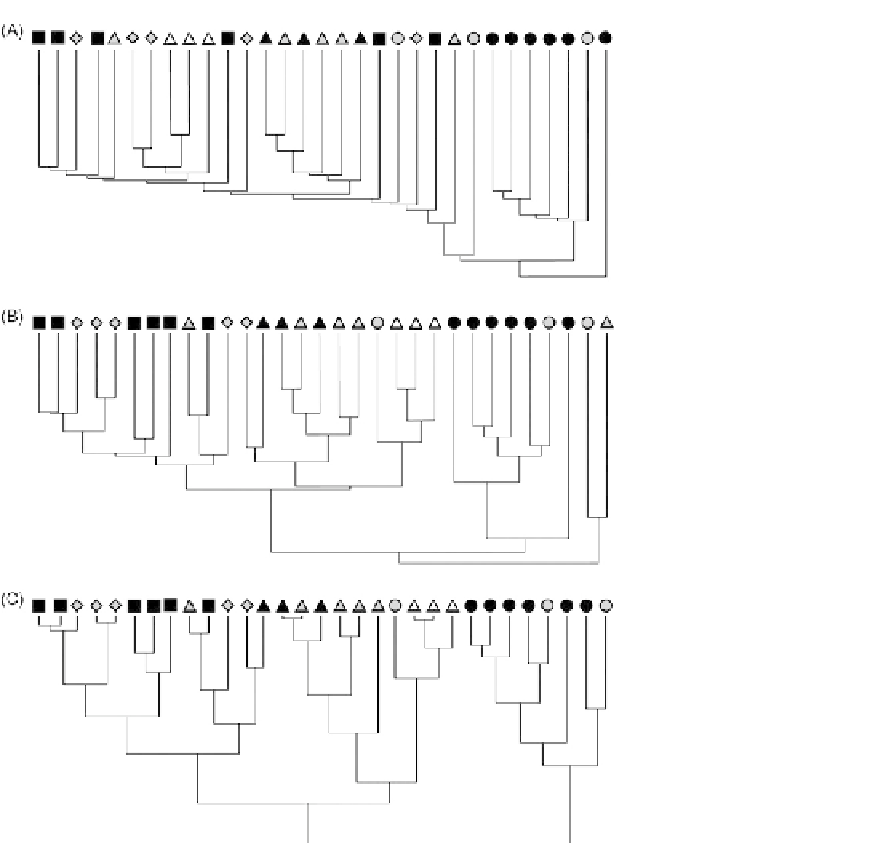Biology Reference
In-Depth Information
FIGURE 10.12
Cluster
analyses of squirrel mandibles,
part II. (A) Single linkage; (B)
average linkage;
(C) Ward's
linkage.
In choosing between methods (or results), it is important to recognize that none of
these clustering methods performs a statistical test to determine whether one linkage is
significantly better than the alternatives. Consequently, it seems unwise to place much
trust in short branches. But even for clusters separated by long branches from the next
linkage, there is no explicit test to determine that the members of that cluster are distinct
from the other taxa or other clusters. One could take the dendrogram as the starting point
for a MANOVA hypothesis, but you should be wary of testing one
ad hoc
hypothesis after
another. It would be better to start with an
a priori
hypothesis of group memberships, test
those by MANOVA, and then use clustering and nearest-neighbor analyses to understand
the distribution of similarities and differences among taxa.
Because all of these methods will generate a hierarchical dendrogram whatever the
distribution of interspecific distances happens to be,
it is important to test whether


